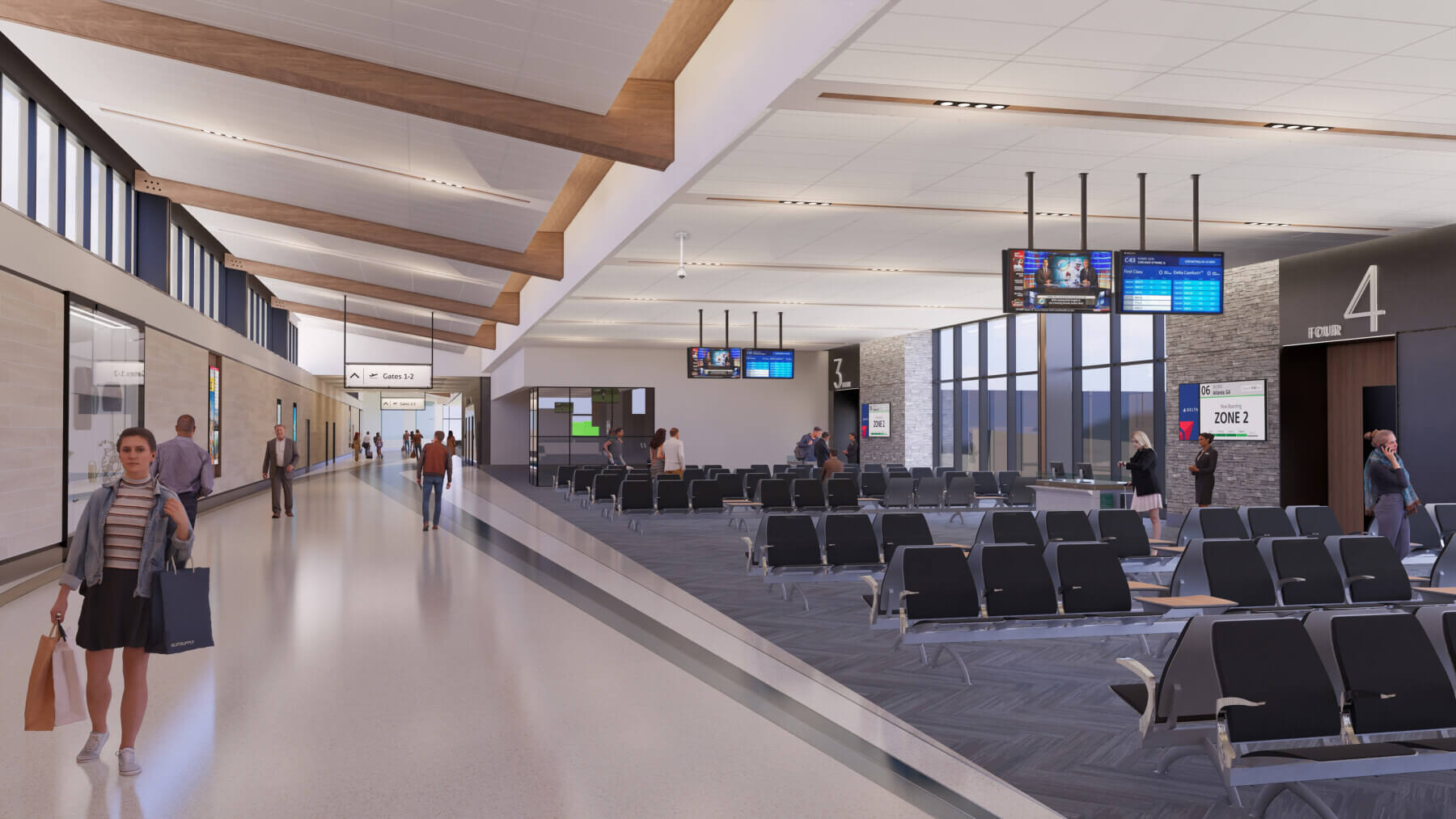
A Modern Makeover
Originally built in the late 1950s, the AVL terminal building has undergone multiple additions and several interior remodels over the years. Our design expands and modernizes the existing single-story, seven-gate terminal into a two-story upper-level concourse, 12-gate terminal building spanning 280,000 square feet, which provides ample room for passenger flow and additional aircraft parking space.
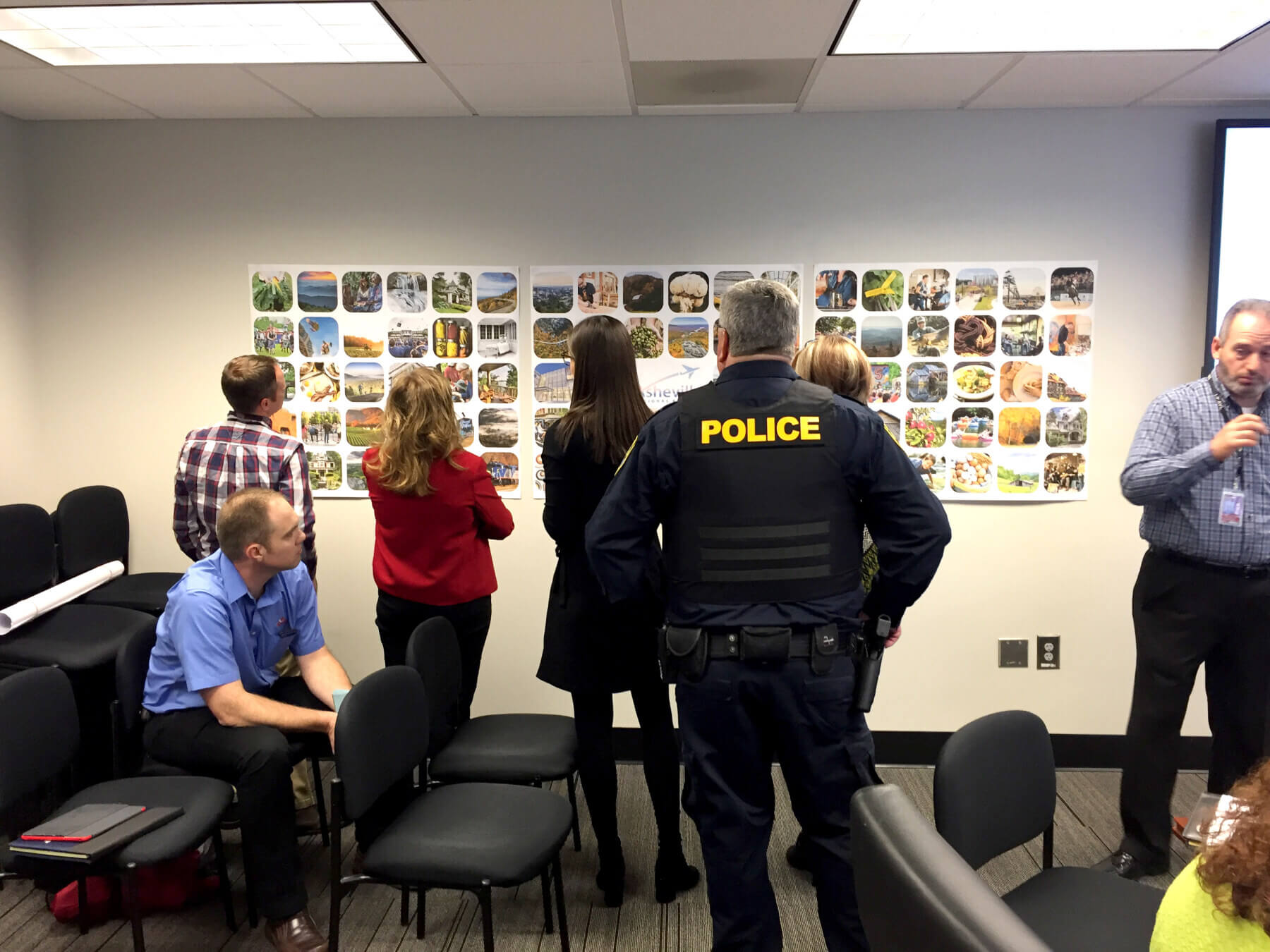
Determining the Vision
The program represents a major reimagining of the entire passenger experience at AVL. Therefore, our design solution needed to define the airport’s brand identity and vision for its future while also capturing the essence of western North Carolina.
To help achieve this, our team hosted a series of Design Visioning workshops featuring image “Mood Board” exercises with a variety of stakeholders, including our core airport leadership group, Friends of the Airport, community leaders, TSA, rental car agencies, airlines and more. We also worked with airport leadership to publish an online Public Engagement Survey, which generated 3,600 responses from AVL passengers.
Feedback from these sessions along with the Public Engagement Survey ultimately helped us to arrive at an overarching design principle: Create a modern gateway, humbly rooted in timeless natural beauty—which guided decisions throughout the entire design process.
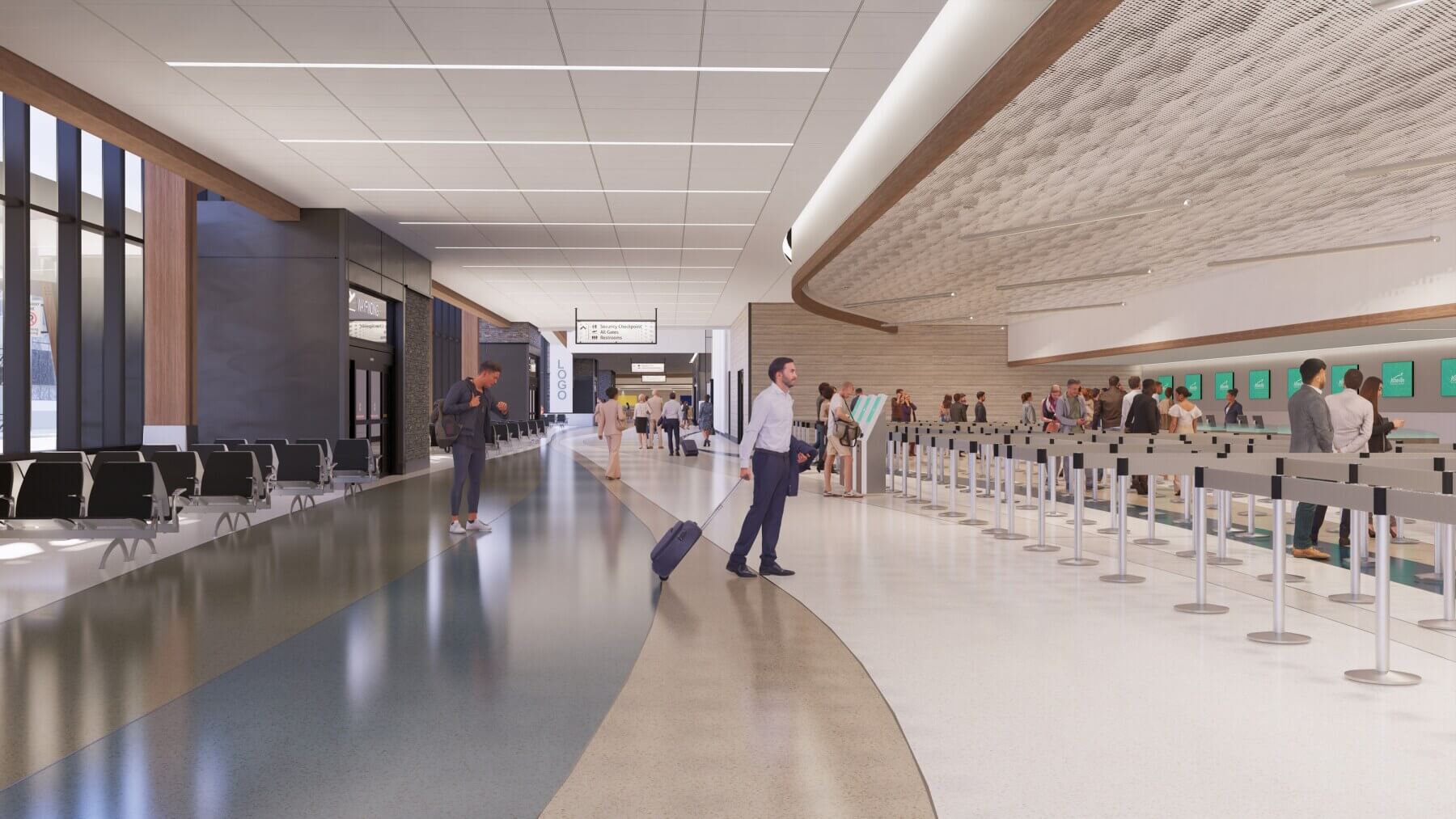
Enhancing & Complementing
Our design includes an expanded, rightsized ticket lobby that supports emerging technologies, future airlines and much-needed queuing space for passenger check-in. An enhanced curbside creates a welcoming and exciting front door to the new terminal.
Expanded holdrooms and airside amenities such as new restrooms, club space, powered seating, and passenger boarding bridges at all gates will enhance the passenger experience. Materials and finishes will be selected to complement the building’s facade and the views to the surrounding mountain landscape.
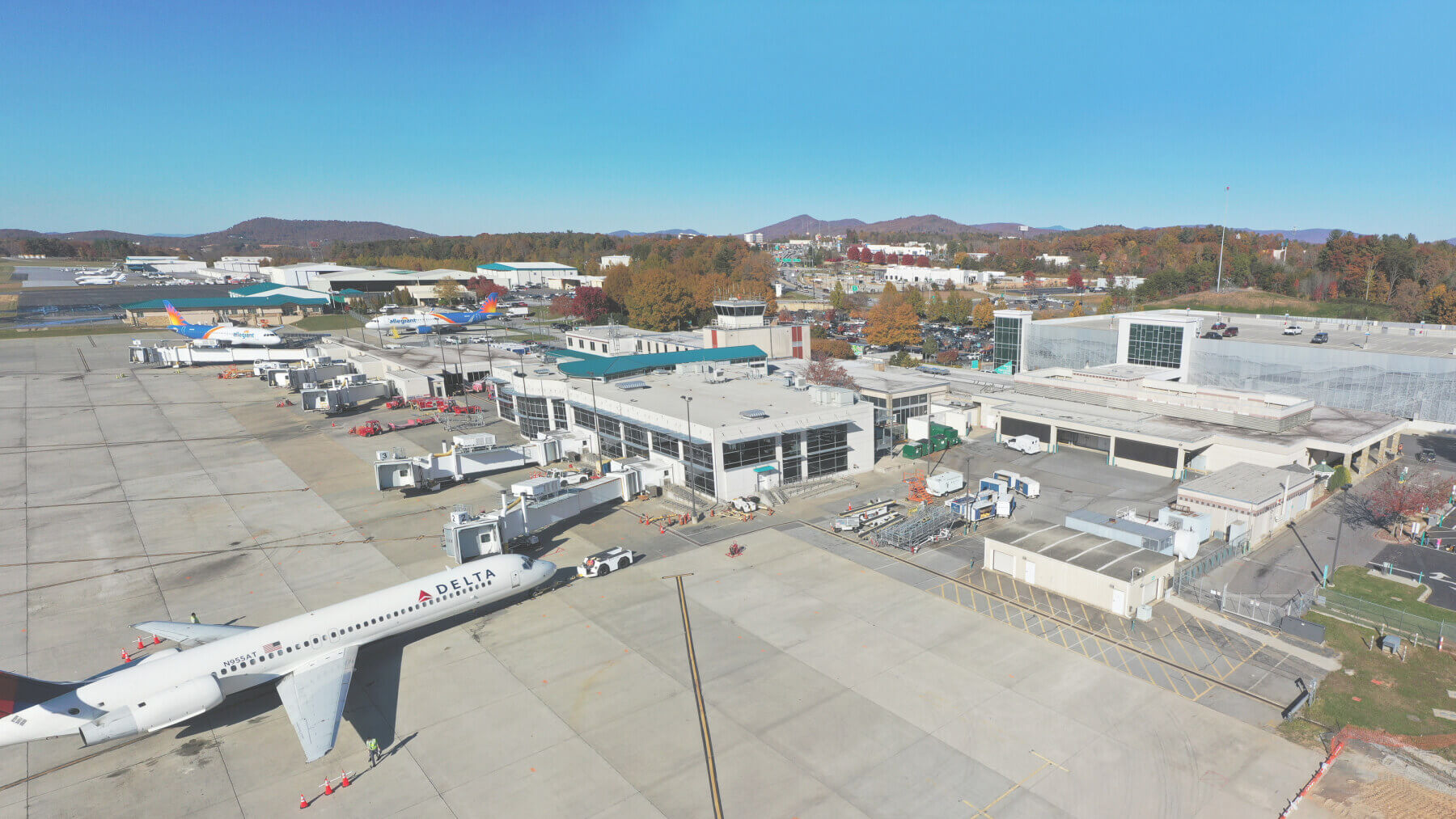
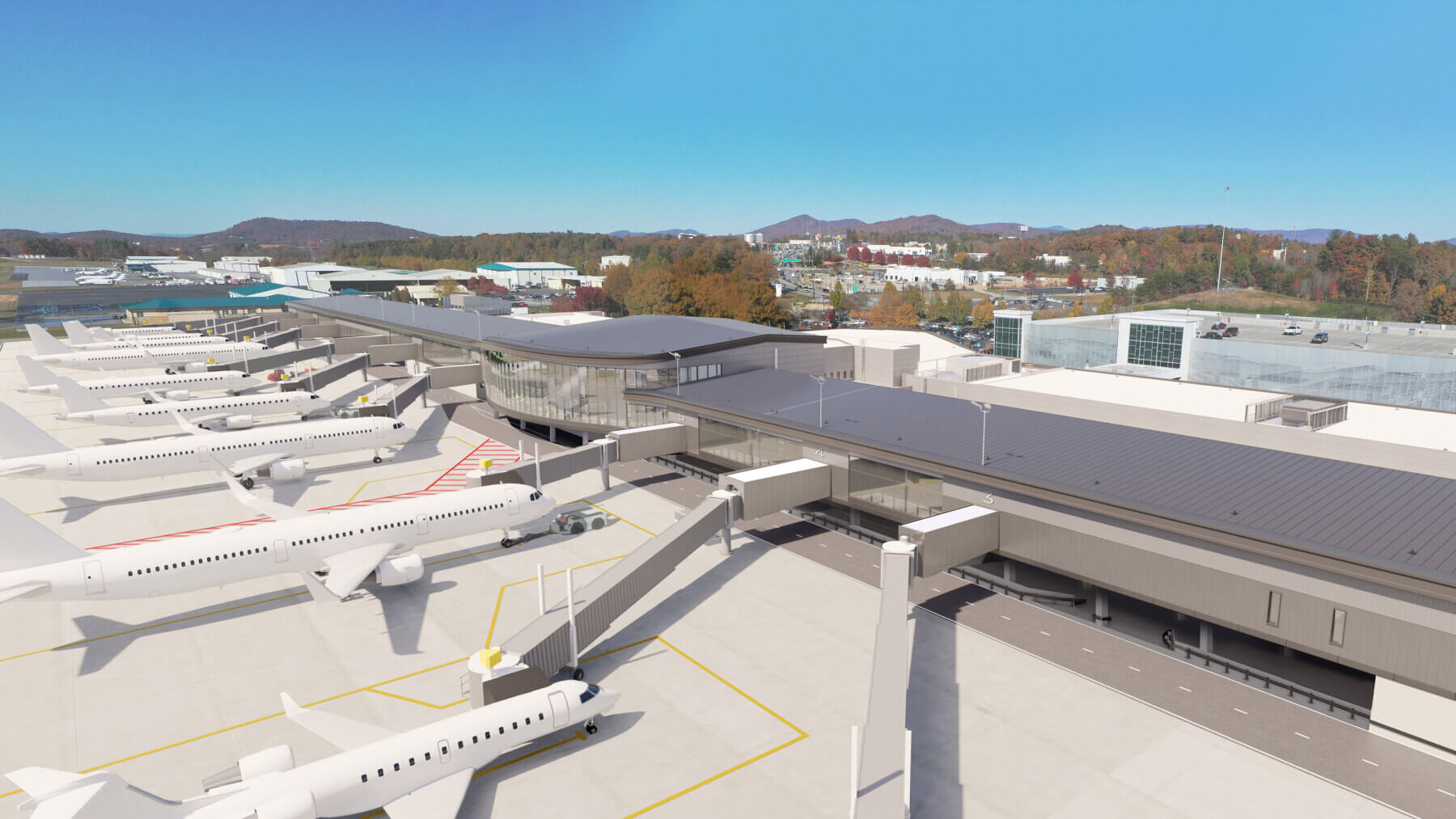
Vistas & Improved Operations
The comprehensive expansion also includes a six-lane security checkpoint and a concessions court that will offer scenic views to the west of the airport. An expanded baggage claim area with new “sloped plate” devices, a reworked baggage system that includes new Check Baggage Inspection Systems, and an outbound baggage sortation system all round out the modernization of the terminal building.
Although our design focuses on AVL’s public-facing elements, the airport’s operational spaces were not forgotten. A new loading dock used for shipping and receiving will help organize and enhance airport operations by moving delivery vehicles off the public roadway. An energy-efficient central energy plant will support the new terminal building, along with the planned future expansion of the facility.
Our civil engineering team was responsible for creating the dedicated service road separating delivery routes from the traveling public. Their scope of work also included a stormwater drainage analysis of the entire site while creating a solution to maintain stormwater quality and flow, as well as modification to the ground transportation lot to enhance passenger flow, and a rework of the airport’s underground utilities to support the expanded building footprint and the new Central Energy Plant.